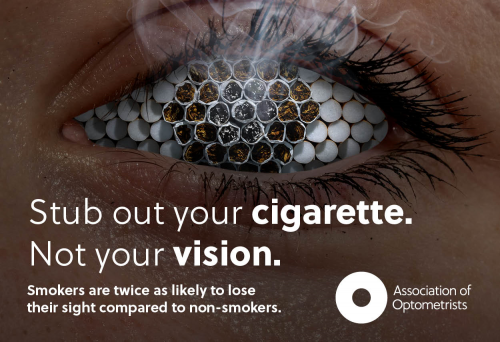Diabetes
Common eye conditions
Diabetes
Diabetes is the major cause of registerable blindness in the UK in the working age group (16-60 years) and is overtaken in the elderly only by other age related problems.
Most diabetic eye disease is treatable, and as many as 95% of these people may have had preventable loss of vision, if only they had been seen earlier.
The Risks
The risk of diabetic eye disease is greater the longer you’ve been diabetic and is much greater if your diabetic control is poor. The best indication of control is probably the blood test carried out by your GP or practice nurse (HbA1c) and ideally the result of this should be under 7.5%. Other general health conditions such as high blood pressure or cholesterol may increase the risk of developing diabetic eye disease. Diabetic eye disease is more likely in Type 2 diabetes (late onset) than Type 1.
In both types of diabetes the risks of developing retinopathy is raised significantly by smoking, so it is strongly recommended that people with diabetes do not smoke.
Diabetic Eye Disease
Diabetes can affect the eyes in a number of ways:
Refractive Changes
If the blood sugar is variable it can cause your spectacle prescription to change, often quite dramatically. Usually if the blood sugar rises, the eye can become more short-sighted. Generally this returns to normal as the diabetic control is regained.
Cataract
There is an increased risk of developing cataract (cloudy lens) if you suffer with diabetes. Management is no different from anyone else with cataract—when the vision is significantly affected an eye specialist will operate to remove the cataract.
Diabetic Retinopathy
Diabetes can cause the fine blood vessels to leak in the retina, causing haemorrhages and micro-aneurysms, and this can cause permanent damage to the retina. Background diabetic retinopathy is not sight-threatening but requires careful monitoring in case it progresses.
Proliferative diabetic retinopathy is a serious and sight-threatening development and requires specialist care.
Treatment
Proliferative or pre-proliferative diabetic retinopathy is treated using lasers, which can seal leaking blood vessels in the retina. However, laser is a destructive process and some healthy retina will be damaged, so vision is often worse following laser treatment. The purpose of laser treatment is to prevent the damage from diabetic retinopathy progressing. Clearly it is best to avoid the need for treatment by controlling your diabetes as well as possible.
Screening
All patients with diabetes should be screened for retinopathy at least annually and this must be done by computerised retinal photography. This will normally be arranged by your GP, and this is not the same as having an optometrists sight test. It is therefore advisable for all diabetics to have an annual sight test with an optometrist in addition to screening.
Optical Coherence Tomography
Optical Coherence Tomography (OCT) allows a detailed scan of the retina which can identify some patients at high risk of visual loss, often before signs are visible by normal examination or photography. This means patients can be referred for treatment earlier, when it is likely to be more effective and before more irreversible damage is done. We strongly advise this procedure for patients at risk – ask the optometrist. This is not covered by the NHS and a charge will be made.
Remember that all persons with diabetes are entitled to an NHS (free) eye examination.
Useful Addresses:
British Diabetic Association
10 Parkway, London, NW1 7AA.
Tel: 020 73 23 15 31
www.diabetes.org.uk
—
Royal National Institute for the Blind
105 Judd Street, London, WC1H 9NE.
Tel: 020 73 88 12 66
www.rnib.org.uk









